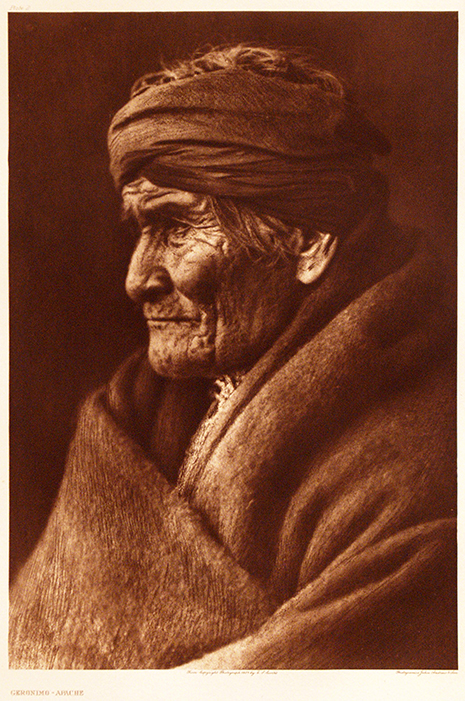
FAYETTEVILLE, Ark. – Edward S. Curtis shaped the fields of photography and anthropology with The North American Indian, a 20-volume series, published in 1930 that represents his experiences documenting nearly 100 tribes in the United States and Alaska. The University of Arkansas Libraries is celebrating Curtis’s ethnographic achievement with an exhibit of images reproduced from the Curtis portfolios, on display in the lobby area of Mullins Library through the end of December.
Curtis born in 1868, was a self-taught photographer who built his first camera. He purchased a photography studio in Seattle in 1891 and quickly developed a reputation for portraits and landscapes. While climbing Mount Rainier, Curtis encountered a group of explorers, including noted anthropologists George Bird Grinnell and Clinton Hart Merriam. Curtis was invited to photograph the Harriman Alaska Expedition where he learned the fundamentals of ethnography. This experience reinforced his desire to pursue the North American Indian Project.
Curtis used glass-plate negatives to photograph his subjects. Once these bulky plates were transported to his studio in Seattle, a team of artisans would begin the photogravure process. Curtis used banana oil and gold pigment to create his signature goldtone prints. He used the finest paper and binding methods, which made the project cost prohibitive. The North American Indian was issued in a limited edition and less than 300 copies were sold.
In addition to photographs, Curtis made 10,000 wax cylinder recordings of American Indian language and music. He recorded tribal mythologies and history, and described tribal population, traditional foods, dwellings, clothing, games, ceremonies, burial customs, biographical sketches and other primary source information. “The passing of every old man or woman means the passing of some tradition, some knowledge of sacred rites possessed by no other,” wrote Curtis. “Consequently, the information that is to be gathered, for the benefit of future generations, respecting the mode of life of one of the great races of mankind, must be collected at once or the opportunity will be lost for all time.”
The project took more than 30 years to complete and cost Curtis his marriage, finances and health. A decade after his death in 1952, Curtis’s work was recognized for its merit, and today fetches extravagant prices at auction. The University Libraries are fortunate to own a full set of the The North American Indian, which is housed in the Rare Books collection of Special Collections. Curtis’s extensive field work continues to support American Indian research today.
Topics
Contacts
Timothy G. Nutt, head of special collections
University of Arkansas Libraries
479-575-8443, timn@uark.edu
Jennifer Rae Hartman, public relations coordinator
University Libraries
479-575-7311,
jrh022@uark.edu